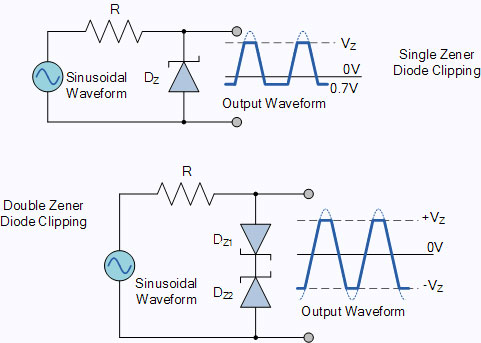A zener diode is a particular type of diode which allows current to flow not only from its anode to cathode, but also in the reverse direction. The diode consists of a special, heavily doped p-n junction, designed to conduct in the reverse direction when a certain specified voltage is reached. This breakdown voltage is known as the zener voltage.
The zener diodes can be found in several applications. Some of these are voltage stabilizers or regulators, peak clippers, switching operations, surge suppressors for device protection, reference elements and in meter protection applications.
Operation:
The zener diode operates just like the normal diode when in the forward-bias mode, and has a turn-on voltage of between 0.3 and 0.7 V. However, when connected in the reverse mode, which is usual in most of its applications, a small leakage current may flow. As the reverse voltage increases to the predetermined breakdown voltage then a current starts flowing through the diode. The current increases to a maximum, which is determined by the series resistor, after which it stabilizes and remains constant over a wide range of applied voltage.

